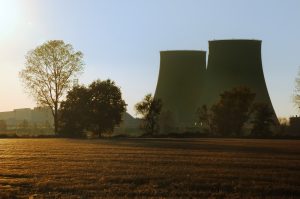The U.S. Congress is attempting to ban uranium imports from Russia to diminish U.S. energy reliance on the country. Given this objective, other energy and mineral export countries, like those in Central Asia, must analyze future energy-related relations and their projects with Russia. Moreover, if energy sanctions and bans on Russia occur, Kazakhstan’s uranium industry could ultimately be a big winner.
The bill in question is the “Prohibiting Russian Uranium Imports Act” (HR 1042), sponsored by Representative Cathy McMorris Rodgers (R-WA), introduced to the Subcommittee on Energy, Climate, and Grid Security. The bill calls for the amendment of the USEC Privatization Act by adding the stipulation that “no unirradiated low-enriched uranium that is produced in the Russian Federation may be imported into the United States,” with some exceptions.
It is debatable if HR 1042 will move forward; the latest action was a May 24 vote for it to be amended. With that said, if the bill or another similar effort is approved (the Senate has the “Reduce Russian Uranium Imports Act,” S.763), it will affect where the United States obtains uranium from. Reuters reported about HR 1042 on May 16, explaining, “the United States imported about 14 percent of its uranium from Russia in 2021, compared to 35 percent from Kazakhstan and 15 percent from Canada.” Russia’s loss could be Kazakhstan’s gain.
Even before the war in Ukraine, Kazakhstan, which has the world’s largest uranium deposits, sought to cement its international image as a reliable supplier of uranium. The International Atomic Energy Agency (IAEA)’s Low Enriched Uranium (LEU) bank is located in the Ulba Metallurgical plant in Oskemen. After the war commenced, meetings between Kazakhstani authorities and Western partners focusing on energy issues continued. IAEA Director General Rafael Mariano Grossi visited Kazakhstan in mid-April, met with President Kassym-Jomart Tokayev, and visited the LEU bank.
Previously, in October 2022, Jill Hruby, administrator of the U.S. National Nuclear Security Administration (NNSA), and Frank Rose, NNSA principal deputy administrator, visited Kazakhstan to discuss nuclear security cooperation and nuclear nonproliferation. They toured the National Nuclear Center, too. These visits are essential for Astana as they help maintain dialogue and reassure Western governments and institutions that Kazakhstan remains a reliable partner regarding nuclear energy cooperation.
Kazakhstan’s atomic company, Kazatomprom, has announced successful deliveries of uranium to Canada and Romania since the war commenced via the Trans-Caspian International Transport Route (TITR) or Middle Corridor. The company has not disclosed if the Middle Corridor has been utilized to deliver uranium to U.S. clients, but this scenario is plausible. Since Washington is keen on reducing uranium imports from Russia, Astana can argue that the Middle Corridor ensures that Kazakhstani uranium reaches its final destination (the United States, in this case) and bypasses Russia. (I have previously discussed for The Diplomat how Kazatomprom is relying more on the Middle Corridor for deliveries.)
It is important to remember that the proposed U.S. bill bans low-enriched uranium produced in Russia. Kazakhstan does enrich uranium: Kazatomprom sent 30 tons of LEU by rail as nuclear fuel assemblies (large bunches of fuel rods) to China, according to a December 7, 2022 announcement. It is difficult with available information to determine how much LEU Kazatomprom would have to produce to meet U.S. requirements. There would also be logistical challenges to transport more LEU to the U.S., and infrastructure upgrades necessary for an increase of LEU exports to occur.
With that said, should Washington remain committed to reducing reliance on Russian LEU in the coming years, Astana and Kazatomprom will need to address these issues, given that profits from increasing uranium exports to the U.S. (and other potential customers in Europe) would be quite significant.
Two final issues should be considered. A subsidiary of Kazatomprom, Ulba Metallurgical Plant JSC, has received a license to explore solid minerals at the Verkhny Irgiz deposit, Aktobe. If significant deposits are found, Kazakhstan will increase its international image as a critical uranium and energy supplier. At a time of tensions, warfare, and significant interest by the United States and Europe to reduce reliance on fossil fuels, cornering the uranium (and even LEU) market would be profitable for Kazakhstan.
Finally, and unsurprisingly, Kazakhstan and other Central Asian nations must be cautious, given the current geopolitical climate, regarding their relations with Russia. Given its geographical location and situation, Astana must maintain good relations (particularly regarding trade, defense, and diplomacy) with Moscow; however, limiting Russian investment and participation in critical energy projects is advisable.
Case in point, as The Diplomat has discussed, Uzbekistan is partnering with Russia’s Rosatom to manufacture a joint nuclear power plant in Uzbekistan. While the country does have an acute energy crisis, given Washington’s objective of reducing profits going into Moscow’s war chests, Central Asian governments are well advised to limit Russian participation in energy industries and ventures, like uranium mining and energy projects.
It is too early to determine the future of HR 1042 or S.763. However, the message is clear: Washington wants to further reduce dependence on Russia, now regarding nuclear energy via LEU. Kazakhstan, a global producer of uranium, must adjust its strategies and objectives accordingly.

































